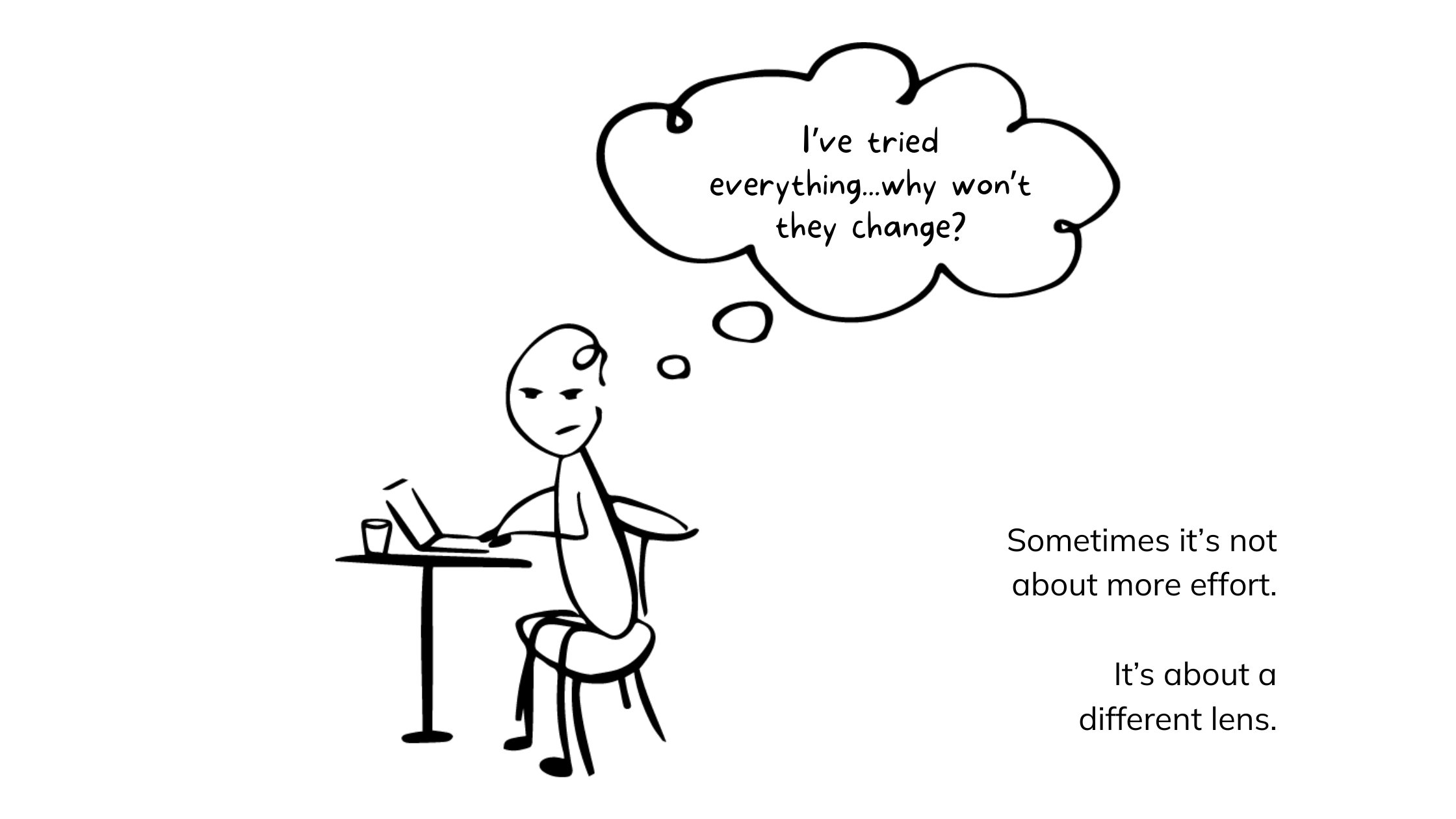You’ve Tried Everything. Here’s What to Try Next. | Mindshift Moments

The Moment:
You’ve had the conversation…again. You were clear. You were kind. You were direct. You set expectations, offered support, followed up. Maybe you even put it in their review. And still... nothing changes.
You start to wonder: Are they not trying? Do they not care? Are they just not capable? Am I failing as a leader? It starts to feel like you’re banging your head against the wall hoping for a different result. You’re stuck. And so are they.
The Mindshift:
When someone won’t change their behavior, it’s tempting to double down - clearer feedback, more accountability, another goal meeting. But sometimes, the answer isn’t more effort. But sometimes the answer isn’t more effort. It’s a different lens.
Two hidden barriers often block change: psychological safety and vertical development. They shape what people can do, not just what they will do.
1. Psychological Safety:
Our brains are scanning for danger 5 to 7 times per second - not just physical threats but social ones too. Eye rolls, dismissive comments, crossed arms can signal: It’s not safe to ask for help. It’s not safe to try something new and mess it up. It’s not safe to admit I don’t know.
Even if someone understands what you’re asking and wants to do it, their brain may be yelling: Don’t! It’s not safe! Safety is influenced by culture, past experiences, personality, and how the brain interprets the signals around it.
2. Vertical Development:
Most development we offer as leaders is horizontal - it adds more knowledge, skills, and tools. Helpful, but sometimes not enough.
Vertical development expands how people see and make sense of the world. Without it, you’re pouring water into a full glass - it overflows, not because they don’t care, but because their current “container” can’t hold more. This isn’t a knowledge gap; it’s a sense-making gap.
The Strategies:
When someone is stuck from low psychological safety or limited vertical development, they need a different kind of coaching - one that helps them build safety and expand their “glass”. Here are a few ideas.
1. Help Them Experiment with Psychological Safety:
Safety is shaped by culture and past experience. You can’t just declare it safe; the brain needs proof. Help them try small, low-risk experiments (like tapping the ice with your foot before stepping on a frozen lake). Ask:
- What part of this change feels most risky to you?
- What’s a small way we could test if that fear is likely to come true?
- What would help you feel safe enough to give this a try?
Introduce the concept of psychological safety so they can name and test the fears driving their hesitation.
2. Coach Their Thinking, Not Just the Behavior:
If they’re stuck, they may not see what you see. Help them expand their perspective:
- How might other stakeholders be experiencing this same situation?
- What other possibilities could explain what’s happening?
- What’s a story you’re telling yourself here, and how true is it?
- What do you want to try next?
And then…hold space. Let them wrestle with their thinking. Don’t rush in with the “right” answer or a tidy fix. Be comfortable with the silence. Encourage reflection and messy drafts of their ideas. Say:
- It’s okay that this is hard. That’s part of growing.
- Take your time. I’m here to think it through with you.
3. Support Growth:
Increasing safety and sense-making is deep work - it takes vulnerability, courage, and time. Recognize it. Celebrate it. Say:
- Two months ago, you didn’t feel ready to speak up. Today, you led a section of the meeting. That’s huge.
- I appreciate how willing you’ve been to experiment with this, even when it feels uncertain.
- It means a lot to see you trying this out. I know how much it takes.
Share your own growth stories, especially the messy ones. When you model it’s okay to not know, to fail, and to learn out loud, you give them permission to do the same.
When someone stays stuck, so do you. Energy drains. Trust erodes. Culture takes the hit. But when you coach for safety and sense-making, you unlock real growth - for them, for you, and for your team.
That’s not just behavior change. That’s leadership.
